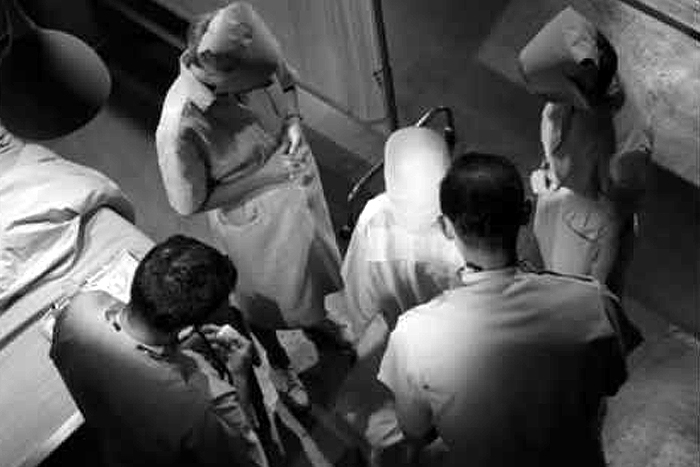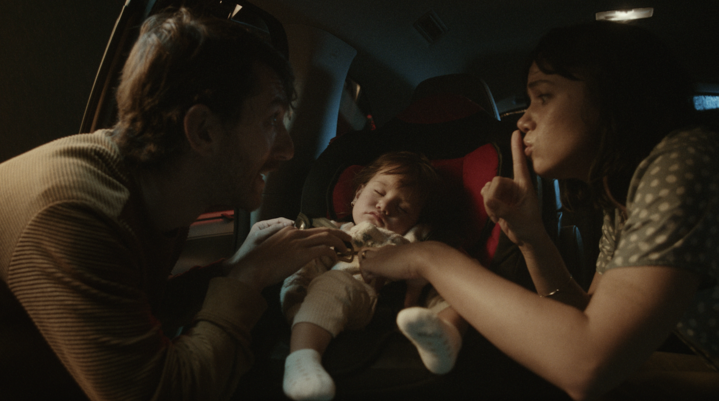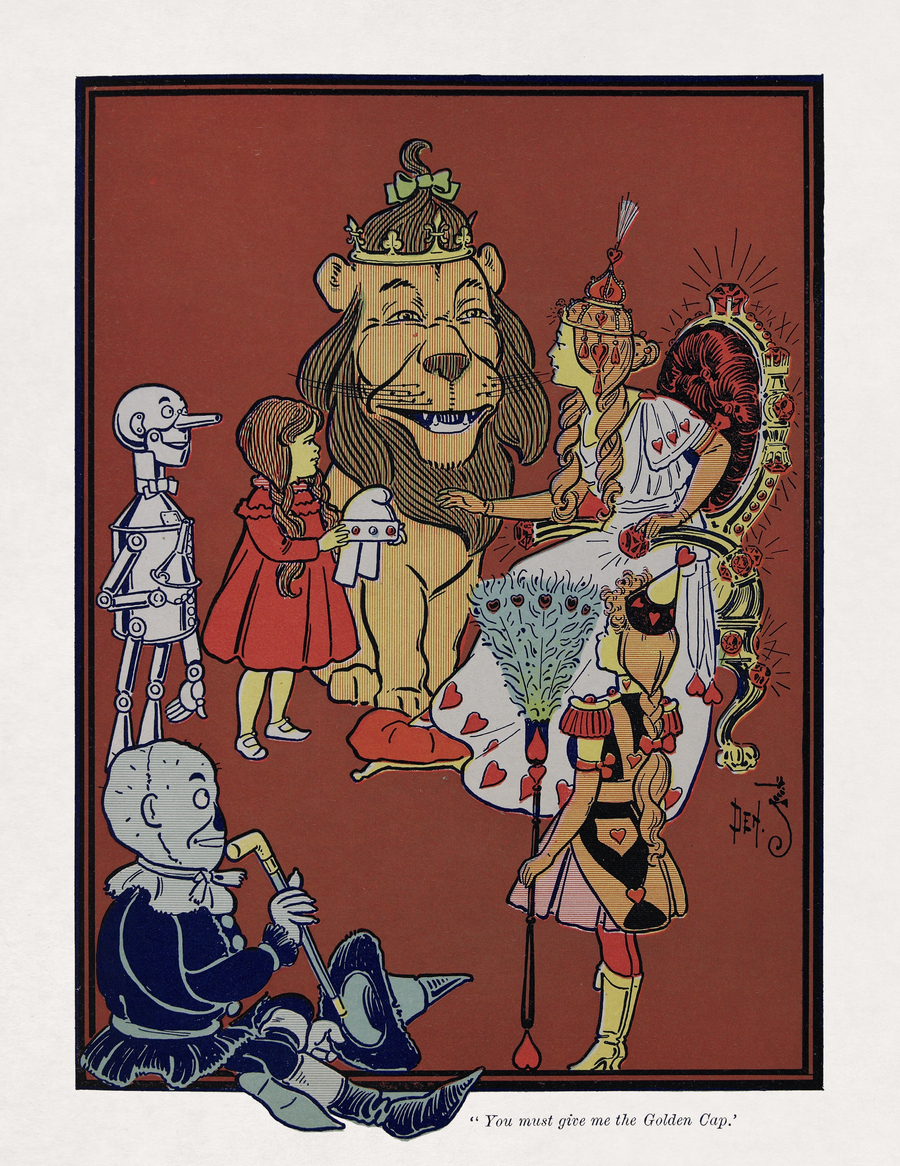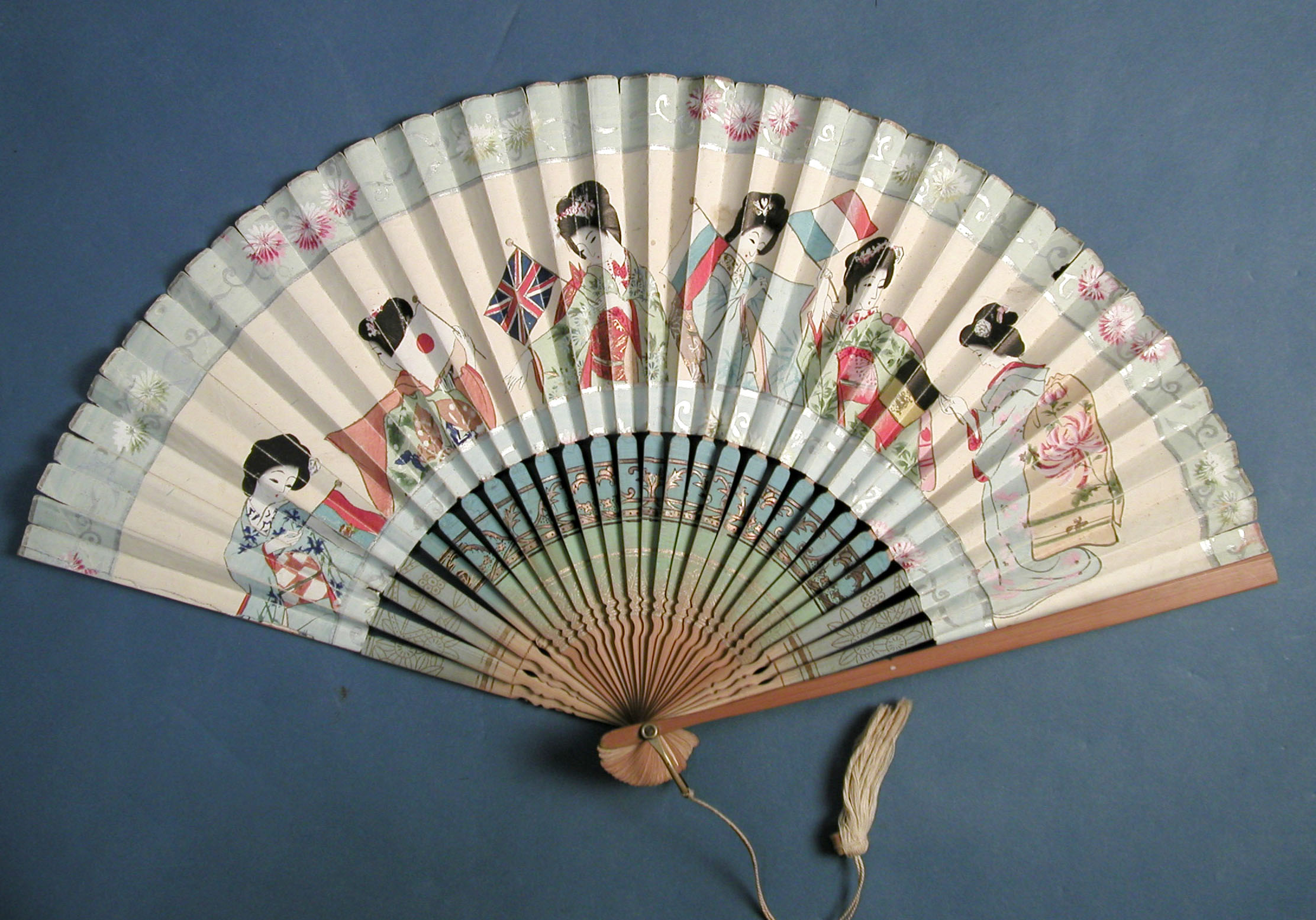
December 16, 2005
Face Value

Twilight Zone: “The Eye of the Beholder.” Episode No. 42, 1960
There’s a scene in an old episode of The Twilight Zone in which a group of physicians, their faces concealed behind surgical masks, are peering over a patient whose face is completely covered by bandages. As the bandages are slowly removed, the doctors step back and gasp in horror.
Something, it seems, has gone horribly wrong.
The camera cuts back to reveal the patient, a vision of Hollywood loveliness. (What did she look like before, one wonders?) Only then do we see that the surgeons have removed their own masks.
And they’re aliens.
The notion of quantifying beauty has long inspired such works of fiction, and it’s easy to see why. From Beauty and the Beast to Cyrano de Bergerac, Dark Passage to My Fair Lady, beauty’s beholder is a fickle and unreliable target. Standards of beauty are themselves imprecise, not to mention prone to cultural bias and generational whim. Regardless, at the end of the day, it’s about what you were born with — and that starts with your face.
Which turns out to be something you may now be in a position to upgrade.
Most of us cannot help but be fascinated by the notion of a human redesign, by that magical makeover cocktail — part cosmetic artistry, part surgical intervention — that results in the perfect re-do. Reality TV shows like Extreme Makeover and The Swan and the quasi-outrageous Nip/Tuck target precisely this amped-up fantasy world, feeding that part of the cultural imagination that says you can’t be too rich or too thin. Buried in this notion lies an implicit assumption that — like a cash windfall brought on by a winning lottery ticket — such improvements can’t help but be mirrored by an equally improved lifestyle. While we understand, in the absolute, that beauty can’t promise happiness, the utopian dream of having it all persists nonetheless.
Beauty is, of course, big business in the developed world, and physical improvements — by way of cosmetic surgery, for example — are expensive yet eminently achievable. Breasts can be lifted, eyebrows lowered, teeth whitened, hair darkened, noses straightened, tummies tucked, skin peeled, plucked, bleached, waxed, polished, shaved or bronzed.
For the truly fearless, of course, there’s always Botox.
But such interventions are negligible when weighed against a complete facial transplant — something which, up until recently, resided squarely in the Twilight Zone. While CNN reported on its technical feasability (and moral ambiguity) more than three years ago, it wasn’t until recent reports of a controversial face transplant in France that serious questions have emerged: questions of psychological adjustment, emotional forbearance, medical ethics and more. It’s spooky and it’s scary, yet many critics speculate that, if successful, hard-core beauty seekers will want access to such procedures, in spite of the potential dangers — which include, among other things, tissue rejection and an elevated cancer risk.
And what then, the ethicists argue? Where do we draw the line?
As much as we can comprehend the intellectual reasons why the facial transplant, as an elective surgery, is horribly misguided, we can’t help but wonder if it will eventually find its way into mainstream culture. It’s easy to imagine other transplants following suit: will progressive cloning therapies soon make it possible, for instance, to request Talisa Soto’s earlobes, or Meg Ryan’s feet? (While we’re at it, what about Stephen J. Hawking’s mind? Madeline Albright’s diplomacy? Or Lance Armstrong’s stamina?) Insane, sure. But not necessarily impossible.
Beyond the obvious troubling topics — an insurmountable psychological adaptation to a Whole New You, for one — lies the inevitable question of whether or not beauty is really just skin deep. And to the degree that designers make things look good, we’re all somehow complicit in this. I’m not suggesting that working as a practicing designer amounts to a tacit support of plastic surgery — only that it’s worth considering how the cultural shift that permits the radical makeover might have some bearing on design.
Ok, it’s a stretch. But is it, really? Book and magazine cover designers, particularly those engaged with newsstand and shelf sales, struggle constantly with the idea that most people do, in fact, judge a book by its cover. The responsible editorial designer reads the book or article in question in order to represent some kind of distilled idea on top: but if you judge a design competition, you have no way of doing this. Instead, you look at the cover, try to glean a sense of what the designer was trying to accomplish and cast your vote.
Is this fair? Or are you making a judgment based on face value?
It is possible, likely even, that in the days that follow, the facial transplant story will short-circuit itself, going the way of Dolly the sheep — which was, it should be noted, similarly plagued with questions of ethical (mis)conduct. And while designers have no role to play in the larger medical questions, the ethics surrounding this issue affect us all, especially those of us engaged in the visual world. The phenomenon of the facial transplant reminds us that there’s more to design than improving the way things look. And that includes people.
Observed
View all
Observed
By Jessica Helfand
Related Posts

Business
Kim Devall|Essays
The most disruptive thing a brand can do is be human

AI Observer
Lee Moreau|Critique
The Wizards of AI are sad and lonely men

Business
Louisa Eunice|Essays
The afterlife of souvenirs: what survives between culture and commerce?

Architecture
Bruce Miller|Essays
A haunting on the prairie
Related Posts

Business
Kim Devall|Essays
The most disruptive thing a brand can do is be human

AI Observer
Lee Moreau|Critique
The Wizards of AI are sad and lonely men

Business
Louisa Eunice|Essays
The afterlife of souvenirs: what survives between culture and commerce?

Architecture
Bruce Miller|Essays

 Jessica Helfand, a founding editor of Design Observer, is an award-winning graphic designer and writer and a former contributing editor and columnist for Print, Communications Arts and Eye magazines. A member of the Alliance Graphique Internationale and a recent laureate of the Art Director’s Hall of Fame, Helfand received her B.A. and her M.F.A. from Yale University where she has taught since 1994.
Jessica Helfand, a founding editor of Design Observer, is an award-winning graphic designer and writer and a former contributing editor and columnist for Print, Communications Arts and Eye magazines. A member of the Alliance Graphique Internationale and a recent laureate of the Art Director’s Hall of Fame, Helfand received her B.A. and her M.F.A. from Yale University where she has taught since 1994.